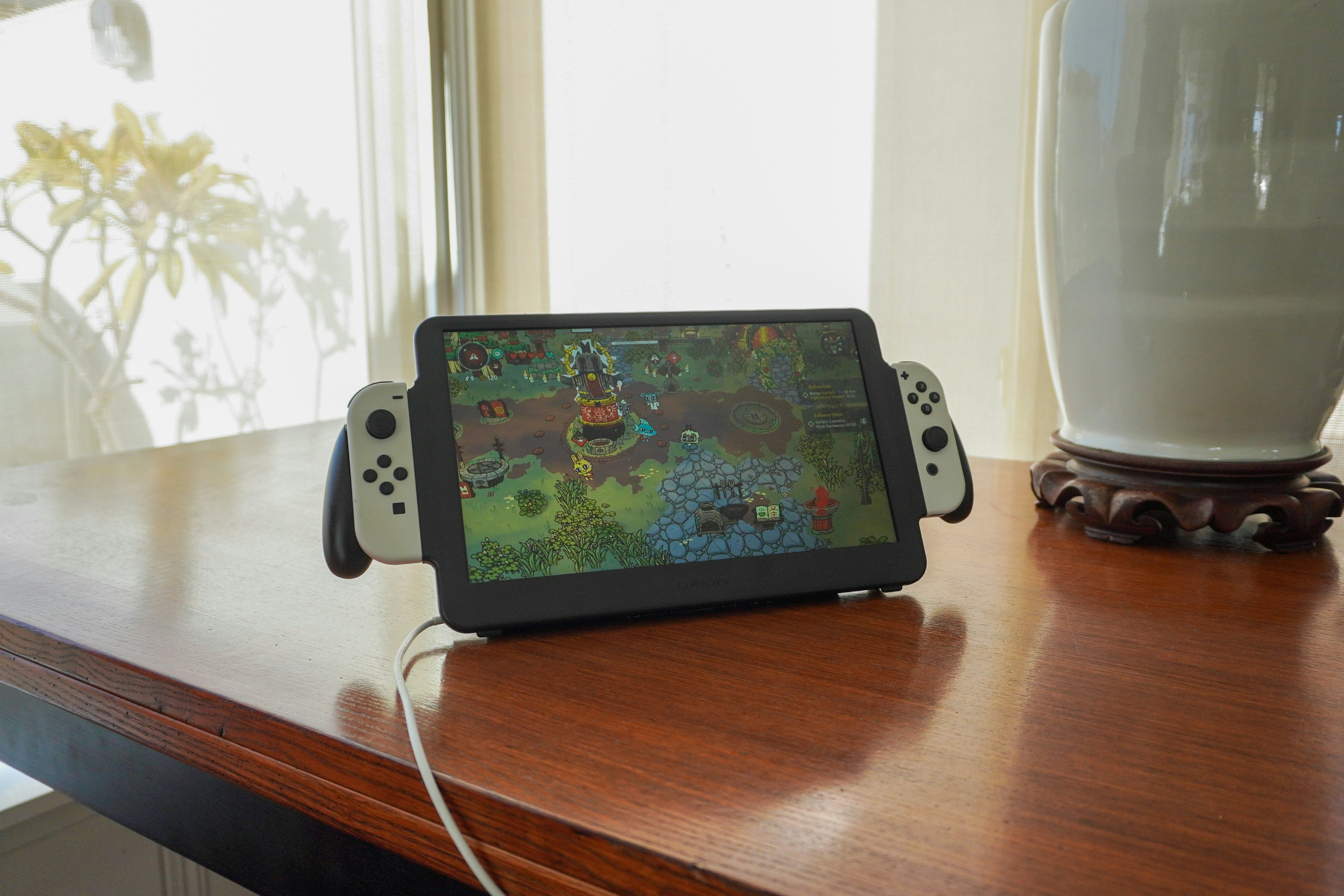
A weird Nintendo Switch accessory is as good a sign as any that handhelds are back.
Ushered in by the success of Nintendo's handheld/console hybrid, I think it's safe to say devices like Panic's Playdate, Valve's Steam Deck, and Analogue’s Pocket wouldn't have been as popular if the appetite for handheld games wasn't stoked by the Switch.
x3Great as these handhelds are, they have their own limitations. The existence of the OLED Switch — which made some minor improvements to Nintendo's recipe — is good proof that there are still ways these devices could be made more appealing and useful. Enter the Orion from accessory maker Up-Switch, a janky but compelling way to improve the Switch by combining a dock with a larger 11.6-inch display. The Orion is far from perfect at $279.99, but for the right person with the right wallet, the display dock is just the thing to shake up your Switch experience and get you eagerly awaiting Nintendo's next iteration.
Inverse may receive a portion of sales if you purchase a product through a link in this article.
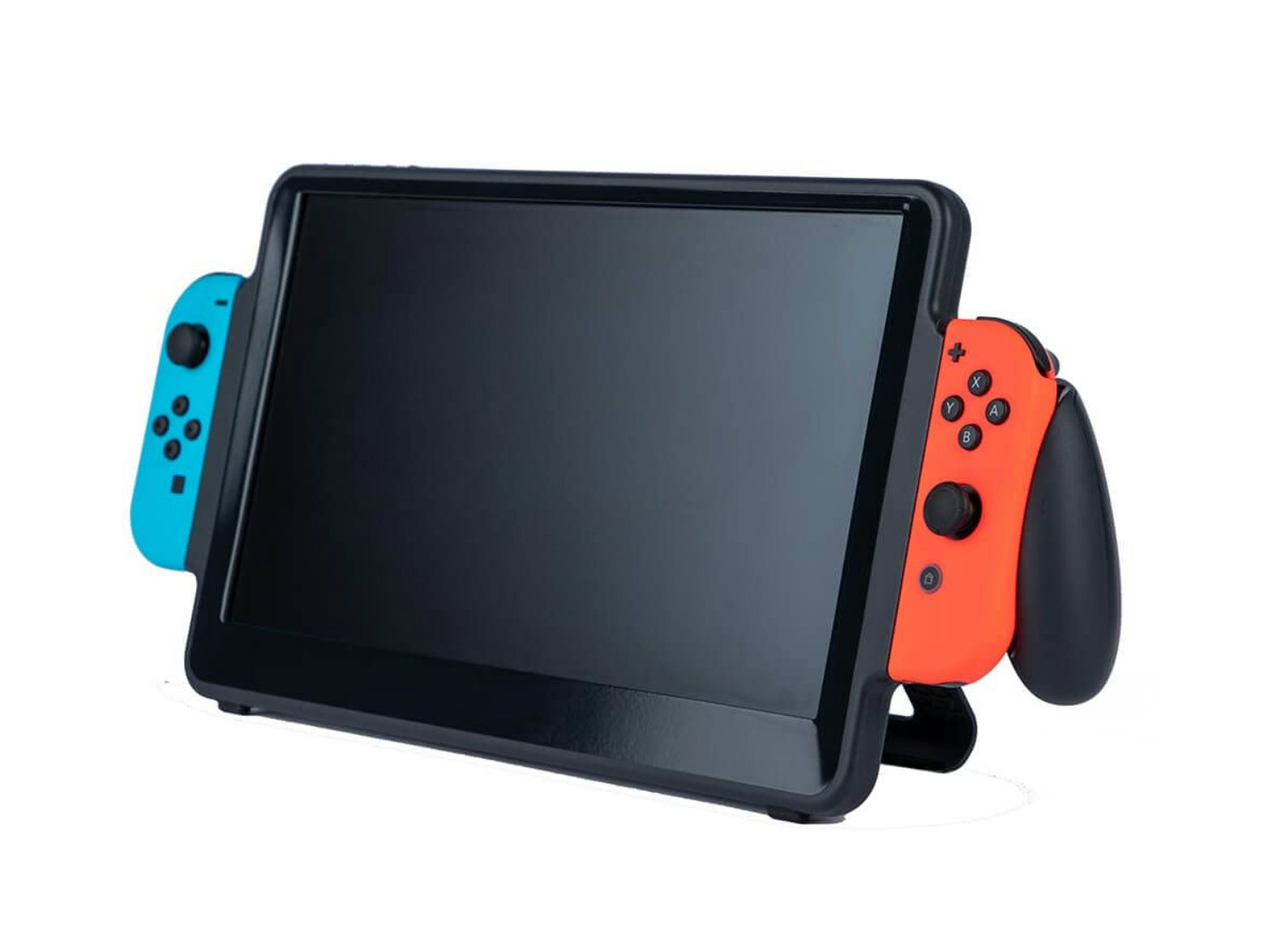
Simple setup
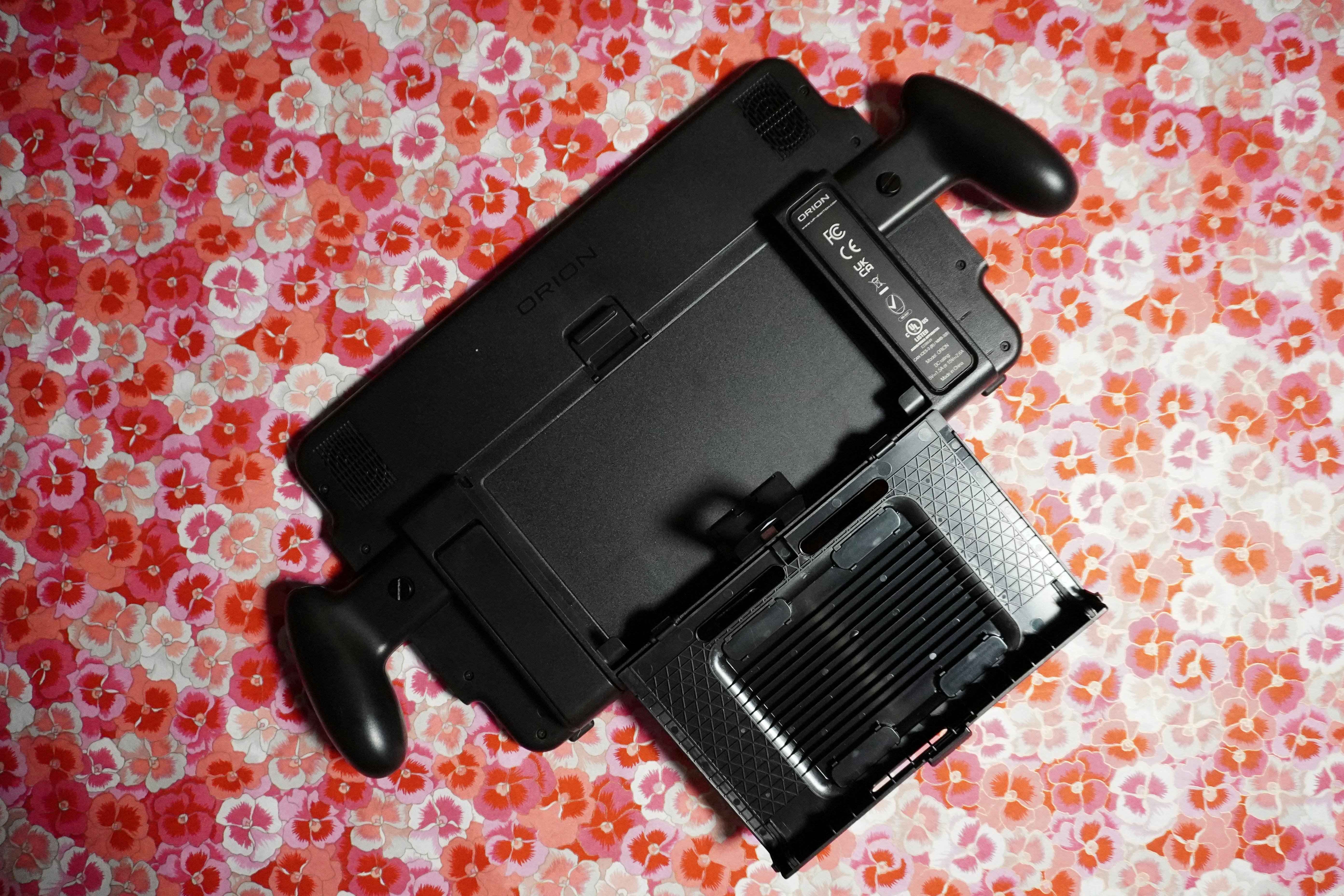
There's really not a ton to the Orion. The back of the display features straps for an external battery pack (more on that later), ventilation for cooling your Switch while it's docked in the device, a back panel that pops open to reveal the USB-C port your Switch will connect to, and finally, a kickstand. The front of the Orion is similarly simple; there's just the display. On the sides, you can find a headphone jack to the right (the Orion does have totally serviceable built-in speakers as well) and on the left, an HDMI port and another USB-C port for power. Rails for slotting in your Switch’s Joy-Cons sit right next to the ports on either side (with the added option of a comfortable ergonomic grip backing for extra support).
The only other notable hardware features are the buttons along the top — a confusing mix of power and volume buttons that pull double duty as brightness buttons, a menu button, and a source/select button.
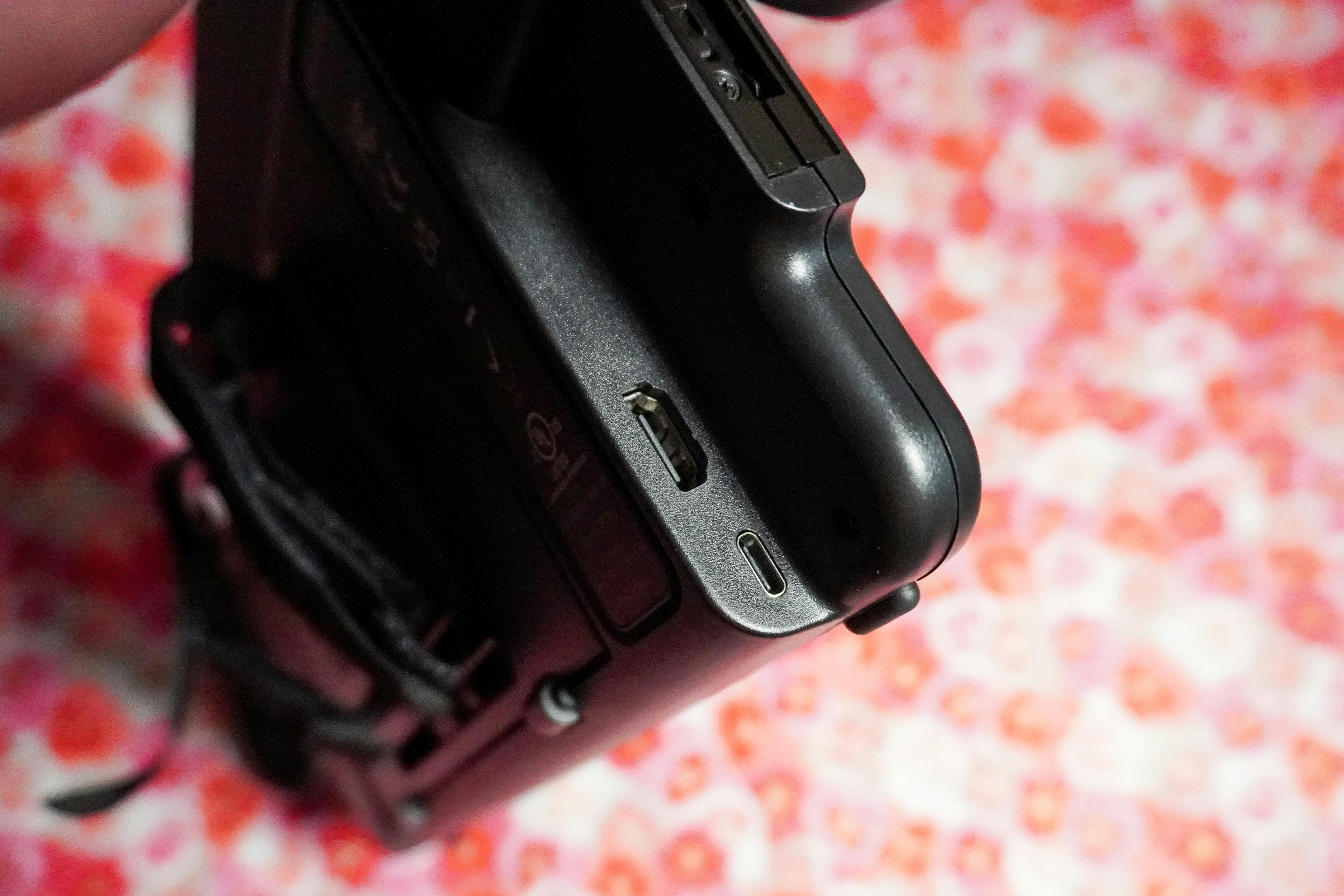
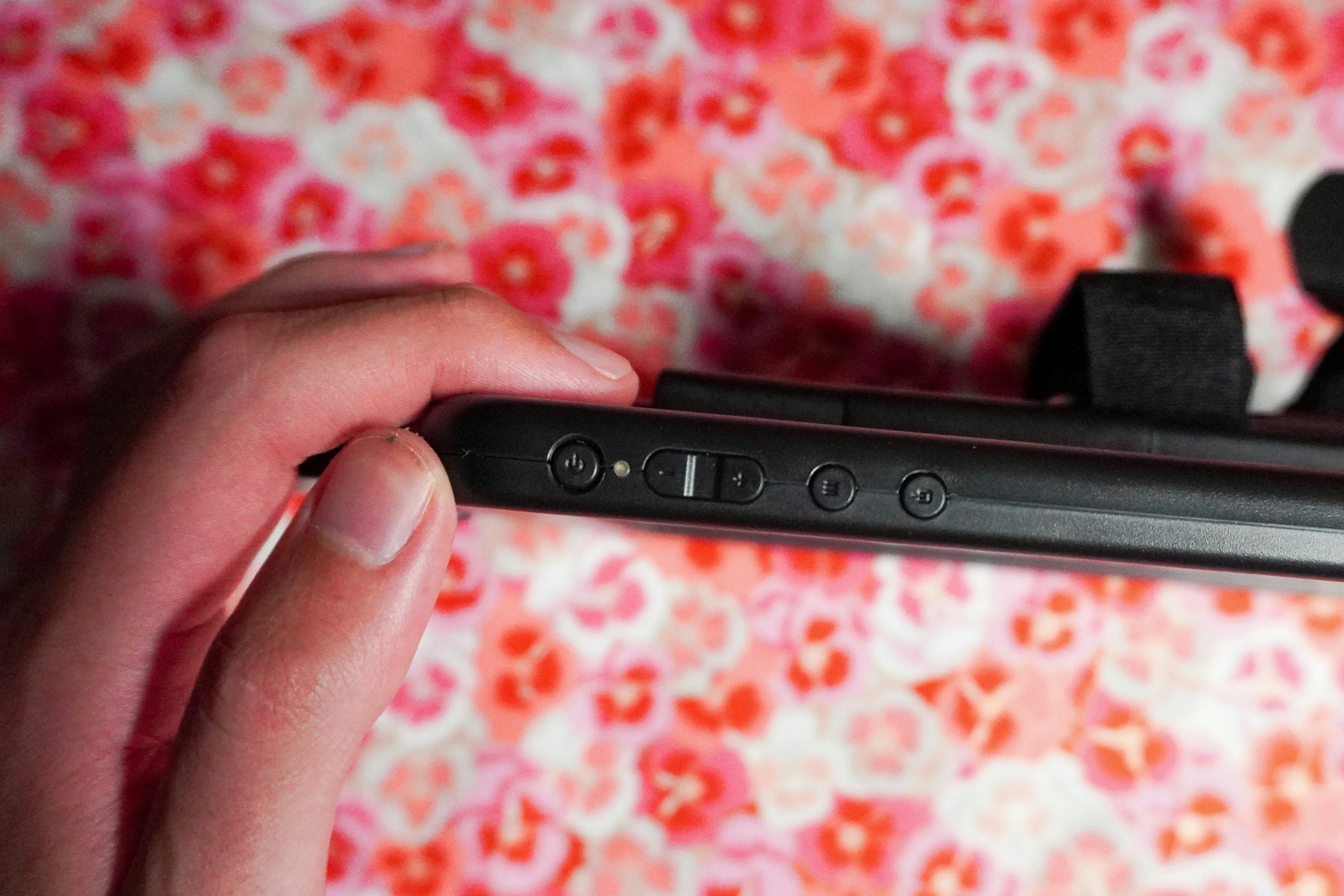
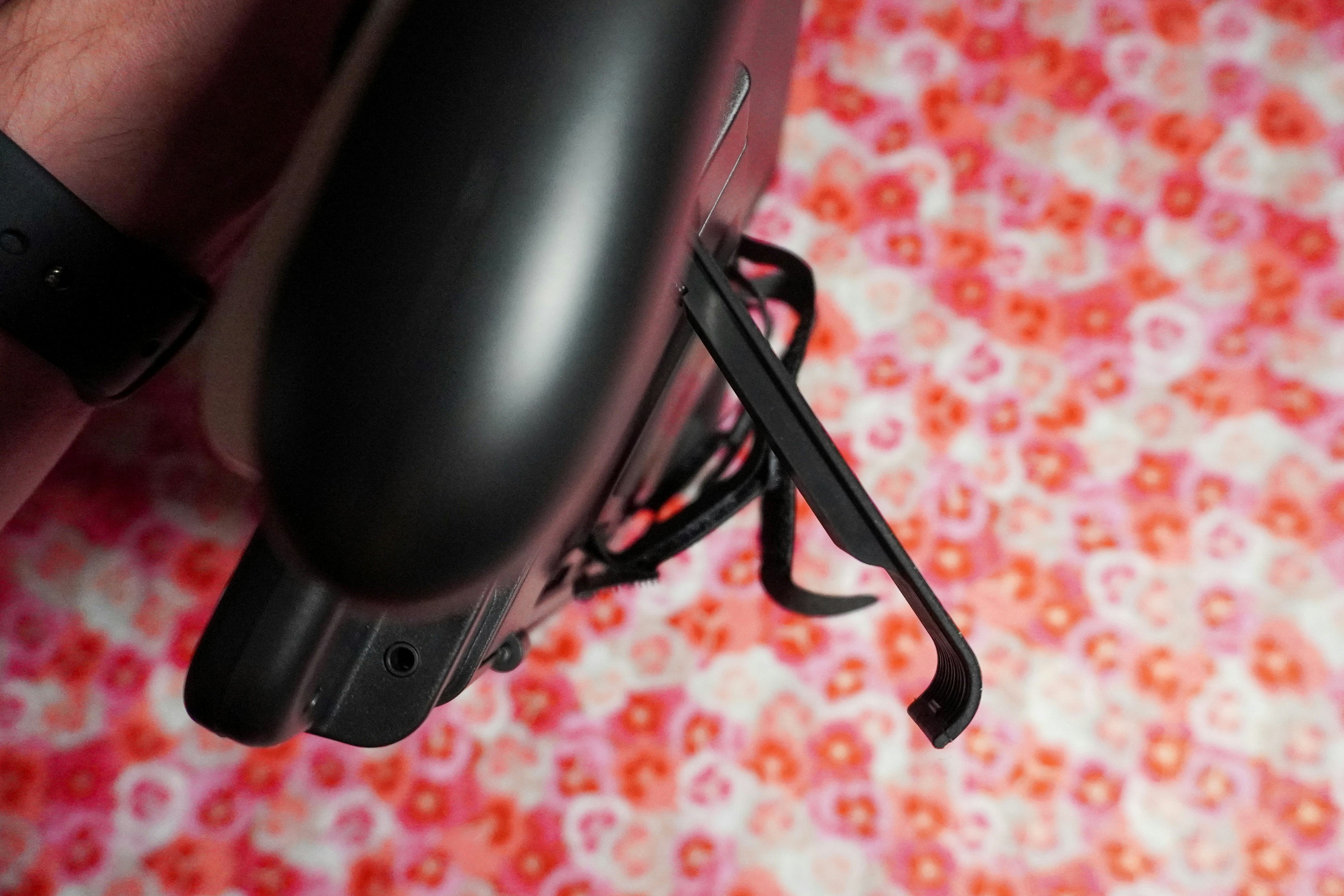
None of it inspires a ton of confidence. There's an overall rickety, plastic-y, quality to the Orion. It feels like a Kickstarter, version 1.0 of a device, even if it's officially being sold now. But the real point is that it works. The 11.6-inch HD IPS display is big enough to feel distinctly different from the 6.2-inch display on a regular Switch and the 7-inch screen on an OLED Switch. The only problem is that you need to find a way to power the display.
Battery trouble
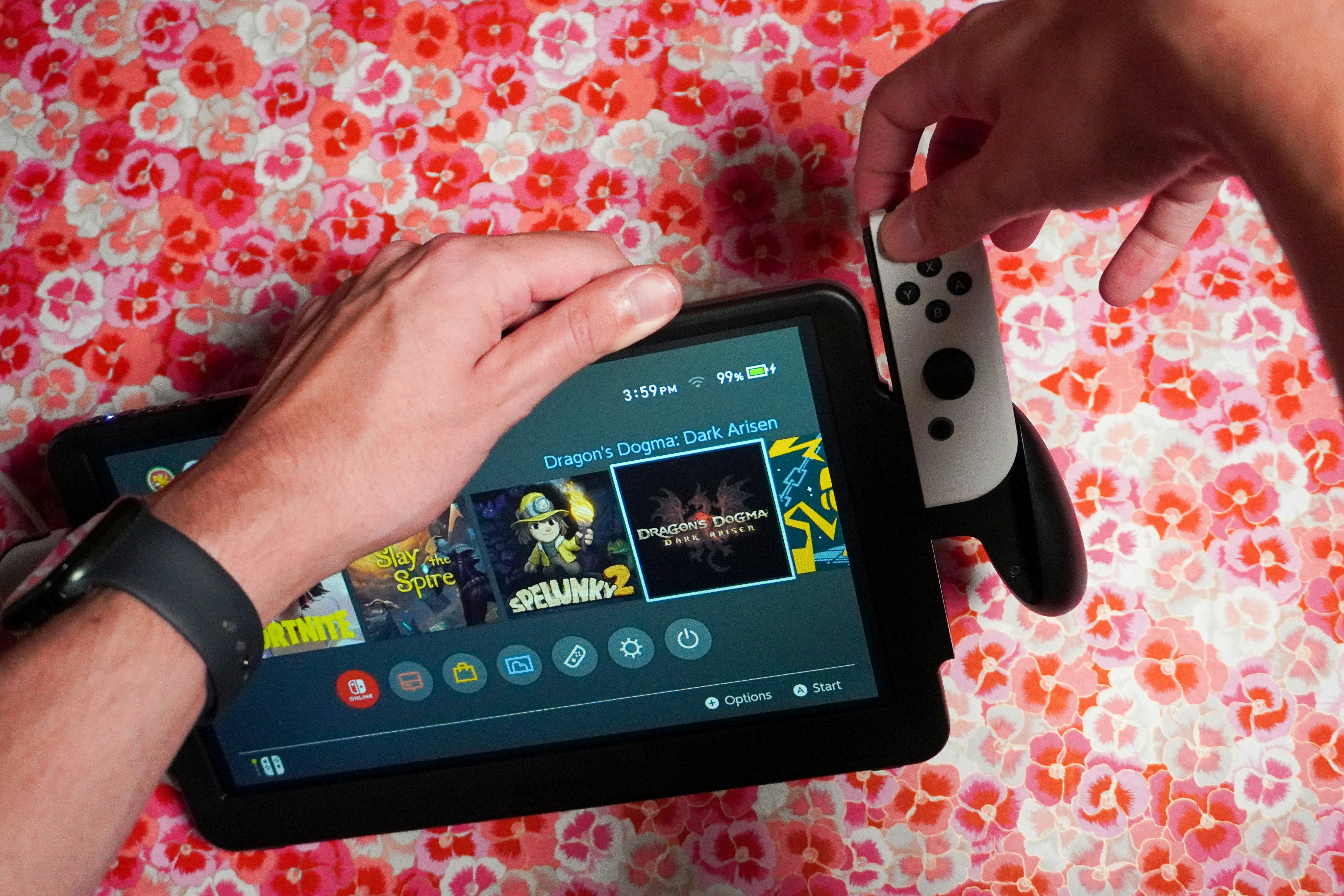
The Orion does not have a battery of its own. This wouldn't be a huge deal normally — plenty of accessories are powered by the devices they connect to — but the Switch is not particularly friendly in that regard. The Switch needs power coming into its USB-C dock if it's going to display anything on any screen but its own, so the Orion's lack of a battery quickly becomes a problem.
To use the Orion with your Switch, you're either tethered to a wall adapter, or you're connecting it to an external battery pack, but even then you can't use just anything. The USB-C charger that comes with a Switch works, as does my 13-inch MacBook Pro charger, but to be absolutely sure the Orion will actually turn on and charge your Switch and Joy-Cons at the same time, you need to make sure you're using a 5V/2A charger or battery pack. If you don't already own that, you're buying it, because the Orion doesn't come with one in the box.
I'll be honest, I don't love this caveat. It dramatically reduces who can reasonably use the Orion and where they can use it. On paper, the Orion might make sense for a child’s bedroom where you might not want a full TV or for use in a hotel room while traveling. But if it has to carry a heavy battery pack or be strapped to the wall to work, I'm not so sure the math really checks out.
I mean, consider the weight with a battery back:
- The Orion weighs 1.5 lbs
- A Switch weighs 0.93 lbs (with Joy-Cons attached)
- The Steam Deck weighs 1.65 lbs
- And the average battery pack from Anker weighs around 0.76 lbs
To combine the weight of the Switch, Orion, and battery pack you get a monstrosity that weighs around 3.19 lbs. You’re going to be using that kickstand!
Playing big
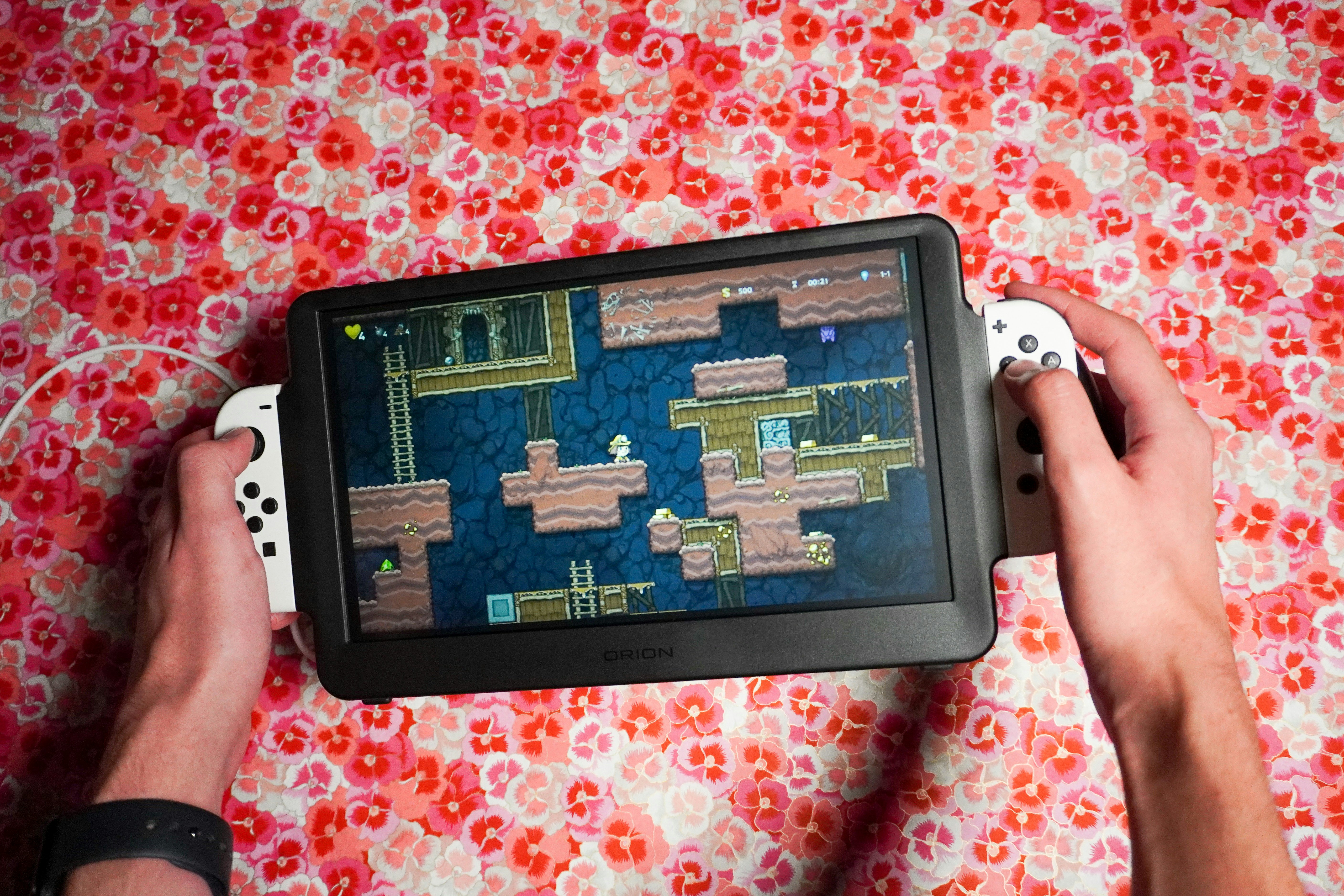
But all that being said, it's really nice to play games on a bigger portable screen. Once again, I think you can look to the OLED Switch as proof. That device only increased the screen size of the Switch by 0.8-inches (from 6.2 inches to 7 inches) but it made the handheld feel completely new. The Orion achieves that same goal to an even greater effect. It might not have the sharpest or brightest screen in the world (i.e. it's matte compared to the glossy Switch displays) but it does elevate things that much more.
Not everyone is going to be swayed by size alone, of course. Besides being less bright and sharp than my OLED Switch, the Orion is also noticeably washed out. Dark blues and greens just don’t look quite as good on the Orion as they do on the Switch’s default screen. I don’t find the differences to be too annoying, but for what you’re paying, it should probably be better. At least viewing angles aren’t impacted!
As an external display, the Orion might actually make more sense. With the Orion connected to my PS5 precariously perched on a chair, I was able to play Destiny 2 in bed, something I wouldn't normally be able to do without dragging a TV around. With a console as portable as the Xbox Series S these kinds of setups could become even more feasible.
Is this practical?

None of this is purely practical. But Up-Switch is doing an alright job with the Orion, given all of the limitations. There are clearly untapped opportunities in handheld gaming if a device like the Orion could be something people would even consider. Valve has made it clear that it intends on iterating on the Steam Deck. I'm fairly certain Nintendo will feel the urge to do the same with the Switch.
If anything, the Orion is a proof of concept then. Maybe the next batch of mainstream handhelds won't be this big, but they'll almost certainly address that appetite for something more engrossing. The Orion isn't quite the device to do that for $279, but if you've ever wondered what a portable gaming display could be like, it exists and works fairly well, warts and all.







